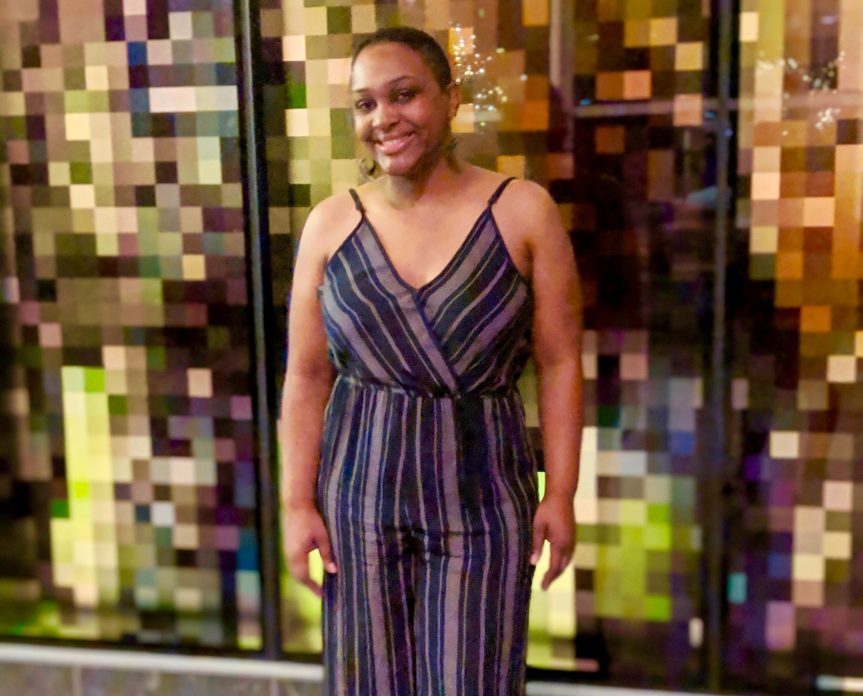What would happen if Oakland’s 14,000 charter school families came together to vote in the coming November 3 election?
Oakland’s charter schools are engaged in a historic 100% voting campaign to make the voices of charter school communities heard in this election, especially with 4 of 7 seats open on the Oakland school board. Families in Action for Quality Education (FIA) is excited to lift up the voices of our stakeholders across Oakland charter schools! With this blog, we hear from students, parents, educators and staff who are working to educate their community around the importance of the election and register folks from their school community to vote. Do you have a good story to share about what your school is doing? Let us know at [email protected].
Jamila Bowling has passionate feelings about the 2020 election.
Bowling is the mother of two students (an incoming 1st grader and 7th grader) at KIPP Bridge Academy in West Oakland. She recently attended a FIA leadership training, where she learned there are 14,000 other charter families in Oakland.
“How powerful would it be if we all showed up and voted?” she said.
Bowling is working in collaboration with Charlie Mintz, Advocacy and Community Engagement Manager with the KIPP Regional Support Office. This year, Mintz said his role is extra crucial. It’s an election year, and there are four open school board seats on the Oakland Unified School District board.
“We’re increasingly aware that our families’ voting makes a decisive impact in local school board elections,” Mintz said. “We want families to be aware of what the consequences of voting or not voting might be, and make the decision that’s best for them.”
Each of the 16 Northern California KIPP schools are running election campaigns this year, Mintz said: hosting workshops to help families with voter registration, information sessions on candidates and measures, developing tools to better inform families and students why voting is important, texting, phone banking, social media and digital outreach.
There are other challenges unique this year to voting during a pandemic, like informing on how to vote-by-mail or educating families about candidates’ positions when they won’t be knocking at their door.
It’s all necessary to help families realize their power to shape their child’s education and make their voices heard.
“A lot of the communities we serve are traditionally underserved,” Mintz said. “The way policies and laws are designed isn’t necessarily with them in mind. We’re hoping to partner with families to highlight the power of voting across our schools.”
Bowling is active at KIPP Bridge, serving as the communications coordinator for the school’s KIPP Family Association. That’s how she heard about the FIA leadership training and the importance of the 2020 election. She said she was empowered by what she learned during the training about the power of the school board and the history and importance of school choice.
“Everything I learned about being a parent and having a choice for which school my kids can attend makes me feel passionate about educating more people and getting them involved in the election,” she said.
Along with family leaders, Mintz said that engaging students is a key component of the KIPP election campaign. His team is creating a presentation in collaboration with History, Government and Economics teachers that discusses the importance of voting with students and invites them to register or pre-register if they are able. Mintz said they’re trying to figure out how students can take on more leadership roles in the campaign as well.
“I know we can find some student leaders who are excited to take this on,” he said, “and are very excited to participate in politics and lead.”
Mintz said KIPP’s goal is 20–30 voters per school. A few dozen votes from each school can be the difference in a close election, which usually describes low-turnout school board elections. That quickly adds up to a few hundred new voters across all the KIPP schools.
“We’re still going to target every voter and get to that 100 percent number if we can,” he said.
Bowling said that she’s been tasked with reaching out to three parents to involve them in the election work, but she said she’s thinking she can find at least seven. She’s enlisted her daughter to use her design skills to create some graphics about voting she can share.
“I’m hopeful other parents will see the need to get involved and raise their voice,” she said. “My goal is to educate as many people as I can about the myths and misconceptions about charter schools, and get them motivated to make change. The only way things are going to change is by raising our voices.”

